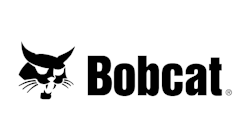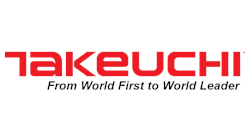Let’s say a manufacturer is looking for a means for capturing a timely picture of its entire supply chain, so as to accurately track the movement of parts and components at any given time. This is no small task. The vast majority of supply chains today are incredibly complex. They impact several individuals and organizations, span multiple geographic locations, and involve countless transactions of varying size and scope.
Could blockchain technology be a viable solution to some of the supply chain challenges manufacturers face today? Many within the tech industry think so, and as Nicholas Merker, a partner at law firm Ice Miller LLP told attendees at this year’s AEM Product Safety & Compliance Seminar, blockchains have the potential to fundamentally transform the ways in which companies create and distribute product offerings in the years ahead.
“I think we’re close to the point where there are going to be companies in the room that are like-minded industry partners that are going to find ways to collaborate and get suppliers onto blockchain technology,” said Merker.
What Is Blockchain Technology?
A blockchain is best defined as an append-only transaction ledger. New information can be written onto the ledger at any time, while older data is stored in “blocks” and cannot be edited, adjusted or changed. The contents of the newly added block are linked with other blocks using cryptography, and any changes made to what’s found on previous blocks in the “chain” would essentially invalidate information contained in each and every other block before it.
The basic concept of blockchain technology is actually several years old. However, it wasn’t until the late 2000s, where the development of modern computers and the rise of cryptocurrency (such as Bitcoin) gave way to current iterations of blockchains. An entirely digital currency that’s not controlled by one specific entity, Bitcoin employed the decades-old idea of a mutual distributed ledger, and it provided individuals and organizations with a secure and controlled means for conducting transactions.
“Basically, when someone says ‘Bitcoin,’ he or she is just referring to one implementation of blockchain technology,” said Merker.
Perhaps the most noteworthy—and promising—characteristic of the technology is that it’s driven by consensus, meaning no individual person or organization can take control of information on a blockchain. Every transaction is published and verified, and contents can be viewed at any time.
“There’s no central authority,” said Merker.
How Blockchains Work
One way to think of how blockchains work is by considering a scenario in which a group of four smoke alarms detects a nearby fire.
“Imagine one of them detects a problem,” said Merker. “Because they are all working in concert and communicating with one another, you can create a blockchain of events. It’s a full ledger of all activities that occur. Information regarding an event or problem can be transferred out to the rest of the smoke detectors, they work to verify it’s legitimate, add it to the blockchain, and then issue an alarm.”
If one of the four fire alarms is unavailable or isn’t working properly, and another one detects a fire, the latter device can still generate an alarm (along with the other two). In addition, temperature readings and other environmental data are cataloged for analysis, and each device contains its own copy of the entire blockchain ledger of information.
Merker’s example serves to highlight the fact that any exchange of information using a central server can be replaced by blockchain technology. Instead of being connected to the central server, equipment is connected to wireless access points or some other technology that allows various machines to communicate with one another.
“This removes the need for that central server,” said Merker. “You’re no longer reliant on a single communication path to a central server, and you’re no longer reliant on the server itself.”
Real-World Applications For Blockchains
Many manufacturers are starting to come around on the idea that supply chain management appears to be an ideal application to leverage the benefits of blockchain technology. One major reason is liability issues related to moving parts and components from one place to another, particularly if they’ve been tampered with, damaged or lost somewhere along the way.
“We’re seeing some problems related to supply chain management,” said Merker. “Software and hardware are being intercepted, and malware is being placed on it. This is a real issue, where items you think are arriving without malware have actually been intercepted by a third party, and those products have been changed.”
One company employing blockchain technology as a means for improving supply chain visibility is start-up Project Provenance Ltd. The company uses the technology to capture its entire supply chain by assigning each product offering a “digital passport” of sorts to authenticate and document its origin. Project Provenance also employs a blockchain to register each and every step of the production process in order to assist with the transfer of ownership and ensure all transactions are authorized. Each party in the supply chain uses different software to access the blockchain, obtain information, and confirm the production process is going according to plan. In addition, the buyer of the product can access information by scanning it via QR-code or NFC technology.
Two other organizations successfully using blockchain technology are IBM and shipping company Maersk. The two entities are hoping it will help reduce the costs and complexities associated with transporting goods by tracking containers during the shipping process, and all members of the supply chain hope to reduce the amount of paperwork needed for each specific shipment. In short, the technology allows them to more easily gain access to accurate and relevant information, make informed decisions based on that data, and then act accordingly.
What The Future Holds
Blockchain technology offers the potential to improve supply chain efficiency, transparency, and accountability. More specifically, companies using the Internet of Things (IoT) and predictive analytics to proactively repair equipment and address parts replacement before equipment breakdowns occur can increase supply chain visibility for both their customers and other members of the supply chain. More specifically, entities in the supply chain can then see when and where components are moving, as information contained within a blockchain is decentralized and passed along through a database shared by all parties.
Blockchain technology offers a wealth of benefits looking to leverage it to address supply chain challenges. Transactions cannot be reversed or deleted, there’s no central authority, and it increases and improves transparency. There are also drawbacks, however. Blockchain technology is slow to process transactions, it’s tied to number of units, and the verification of transactions is incredibly complex. In addition, implementation of blockchain technology requires companies to invest considerable time, capita, and resources.
The technology does have potential, though. And while the vast majority of manufacturers are not yet leveraging blockchains to assist in the production and distribution of product offerings, the expectation among tech experts is that fact will likely change—and soon.
Said Merker, “This is just the beginning.”









